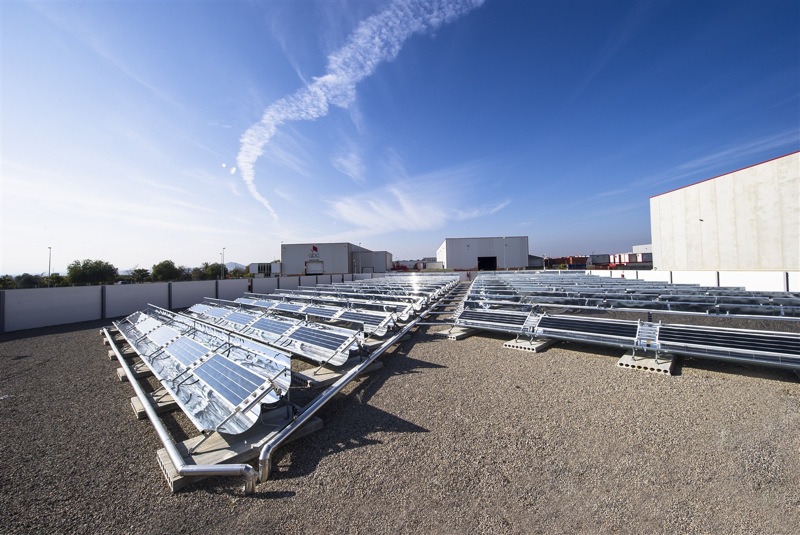The solar panel made from a particle collider


CERN, the international Swiss physics lab renowned for hunting the elusive Higgs boson, smashing subatomic particles, unravelling the mysteries of antimatter, toying with faster-than-light neutrinos and so forth, has something much more pedestrian to tell the world: It has developed and commercialized a solar panel, and installed a few hundred of them on the roof of the Geneva International Airport.
But this is no ordinary solar panel. CERN built it using technology first developed for its particle colliders - in case you've been sleeping these last few months, CERN has been busy operating its 17-mile underground circular particle accelerator and collider to try find the Higgs boson, a sub-sub atomic particle that would help confirm what's known as the Standard Model of particle physics. We won't digress onto that.
"The panels emerged from vacuum technologies that were developed for fundamental physics purposes, and it is highly gratifying to see them put to use for renewable energy," says CERN scientist and the panel's inventor Cristoforo Benvenuti, in a press release.
The thin film solar panel deploys a vacuum with "getter" strips, which CERN describes as "a material which attracts residual gas molecules like bugs to flypaper." CERN first used getter strips in the 1980s in its Large Electron-Positron Collider, a predecessor to the Large Hadron Collider which it uses today.
In the solar panels, the strips presumably attract photons that then transform into electricity via a photovoltaic process. But CERN won't tell me. They fobbed off that question and others I posed, referring me to their commercial partner, a Spanish company called SRB.
My journalistic instincts tell me it's going to take a while to receive meaningful responses, so I'm posting this now, before the news gets too stale. CERN announced it on March 9.
The panels's vacuum chamber provides excellent insulation according to the CERN press release, which says that they have maintained internal temperatures of 80 degrees C when covered in snow.
The panels make use of thin film technology rather than conventional silicon solar cells. Most solar panels in the market today are based on silicon, although some, like those from First Solar and Solar Frontier, use thin film.
I tried to get CERN to tell me what thin film material they use, but see the account of the brush-off a few paragraphs above. First Solar uses cadmium-telluride, and Solar Frontier uses copper-indium-gallium- selenide (CIGS).
None of this sounds like the sort of thing the common man could afford. In an era when solar panel prices are plunging, I can't imagine that a "getter" stripped, vacuum-chambered solar panel could come to Main Street without a sizable bank loan.
I applaud CERN for putting its heady technology to practical use. It's not the first time something with everyday potential has emerged from the Swiss wonderama land. Tim Berners Lee conceived the World Wide Web while at CERN.
But until I get some more answers, this one feels a little like CERN is trying to show a practical side to offset its critics who complain that it spends tons of public money on big science machines and experiments.
Note to CERN: I'm impressed by your grand work that has made so many headlines lately (see a partial list below of SmartPlanet stories, many of which I've written) and that are helping to spring physics into a rightful place in public awareness. But if you're going to get down on the common's man level and announce a solar panel, please, can we have a few more answers. SmartPlanet readers deserve it. Thank you.
More smashing stories from CERN on SmartPlanet:
- Whoa neutrinos, whoa! CERN says particles not so fast after all
- The elusive Higgs surfaces! Professor Higgs that is. 'God particle' physicist in rare interview
- CERN: We'll find that Higgs boson even if it takes 4 trillion electrovolts
- Fame! Science and energy hit the bright lights
- Particle of doubt: The Higgs boson and scientific uncertainty
- Slowing down antimatter at CERN
- How to save energy on particle colliders
- The practical uses of antimatter
This post was originally published on Smartplanet.com